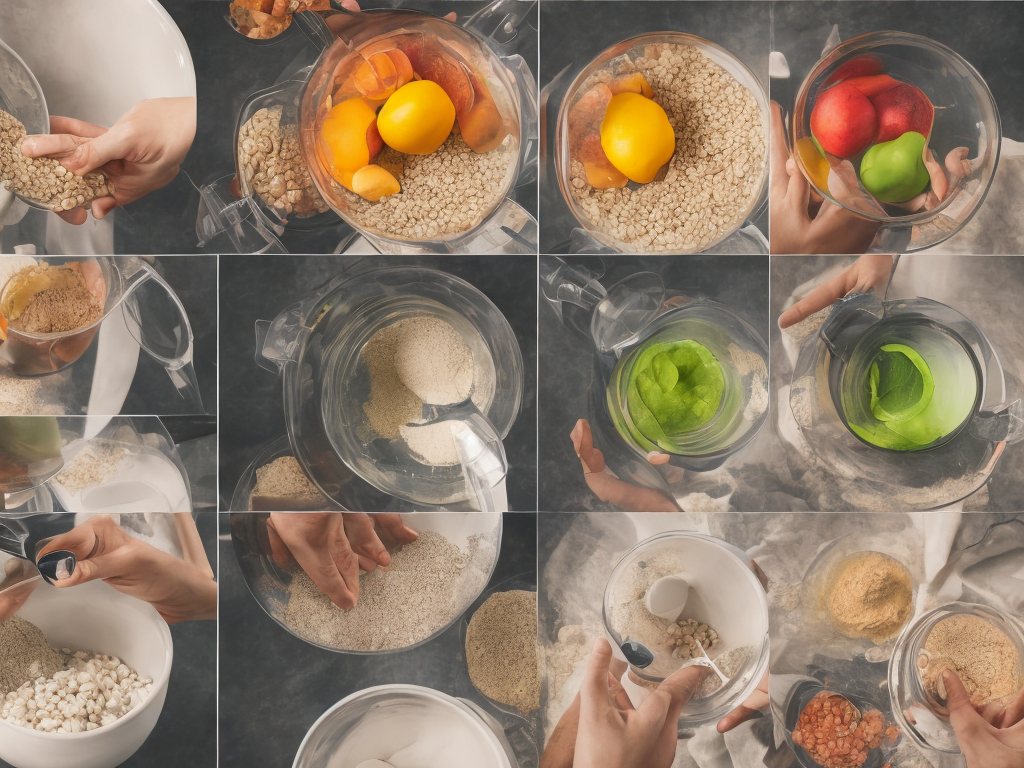
Mixing and blending are two terms that are commonly used interchangeably, but they actually refer to two different processes. Both mixing and blending are used to combine different substances, ingredients or materials but the way they are carried out differ from each other. In this article, we will be explaining the difference between mixing and blending.
Mixing
Mixing is the process of combining two or more substances with the aim of creating a homogeneous mixture. In mixing, the different substances are combined together in such a way that they are evenly distributed throughout the mixture. Mixing can be done mechanically, manually or through the use of machines or equipment.
Mechanical Mixing
Mechanical mixing involves the use of machines to combine the different substances. This process is carried out by introducing the different substances into a mixer or blender which has some kind of agitation platform that rotates at high speed, breaking up the substances and thoroughly blending them together. The agitation platform can come in various shapes and sizes depending on the nature of the substances being mixed. Some commonly used agitators include paddles, helixes, screws and impellers.
Manual Mixing
Manual mixing, as the name suggests, is the process of mixing the substances by hand. This is usually done when the substance to be mixed is in a small quantity or when there is no equipment available to do a mechanical mix. Manual mixing can be done by stirring, kneading or shaking the mixture vigorously until a uniform consistency is achieved.
Blending
Blending, on the other hand, is the process of combining different substances to create a mixture that has a consistent composition throughout. Unlike mixing, blending involves the use of blending agents to combine the different substances together. Blending agents are usually liquids that are added to the substances to help combine them.
Blending can be done using several types of equipment. Some commonly used equipment include ribbon mixers, horizontal blenders, conical blenders and cube blenders. In most cases, the type of blender selected depends on the nature of the substances being blended.
Ribbon Mixers
Ribbon mixers are an essential piece of equipment used for blending wet or dry powders. They consist of a spirally arranged ribbon-shaped blade that rotates within a U-shaped trough. As the blades rotate, they force the substance from one end of the trough to the other, creating a consistent blend.
Horizontal Blenders
Horizontal blenders, as the name implies, have a horizontal axis of rotation. They can be used for mixing and blending liquids, wet powders or sticky materials. Horizontal blenders come in different shapes and sizes and can be customized to fit the specific mixing needs of the substances.
Conical Blenders
Conical blenders are used for blending dry powders and granules. They have a conical- or V-shaped bottom which allows for uniform blending of the substance as it moves from the top to the bottom of the container. The blending process can be carried out both manually or automatically.
Cube Blenders
Cube blenders, also known as tumble blenders, are one of the most commonly used types of blenders. They are used for the blending of dry powders, granules, and pellets. The blending is achieved through the use of a stationary cube-shaped container which rotates about its axis of symmetry. The material inside the container is tumbled and mixed by the movement of the container.
Differences between Mixing and Blending
The difference between mixing and blending is quite simple. Mixing is the process of combining two or more substances together to create a homogeneous mixture while blending is the process of using blending agents to mix substances together to create a consistent blend. These differences manifest in several ways, including:
1. Equipment
Mixing can be done using a wide range of equipment, from basic mechanical agitation platforms to simple manual mixing methods. Blending, on the other hand, requires much more specialized equipment such as ribbon mixers, horizontal blenders, conical blenders or cube blenders.
2. Method of Combining
In mixing, the substances are combined together through a process of agitation, whether manually or through the use of a mechanical mixer. In blending, the substances are combined by the addition of a mixing agent – usually a liquid.
3. Composition
Mixing usually results in a homogeneous mixture where the composition of the substances is evenly distributed throughout the mixture. Blending, on the other hand, creates a consistent blend where the composition of the substances is evenly distributed but not necessarily uniform.
4. Application
Mixing is commonly used for the preparation of ingredients for cooking or baking, such as making a cake batter or a salad dressing. Blending, on the other hand, is commonly used in the pharmaceuticals, food processing, and chemical industries.
Conclusion
In conclusion, while mixing and blending are two similar processes, they have different applications and composition. Mixing is a process of combining different substances by agitation while blending involves the use of blending agents to combine different substances together. Mixing is used in everyday cooking while blending is common in industrial contexts. Whether you are mixing or blending, the key to success is selecting the right equipment and method for your specific needs.
 Self-Instruct
Self-Instruct